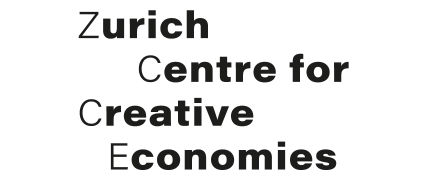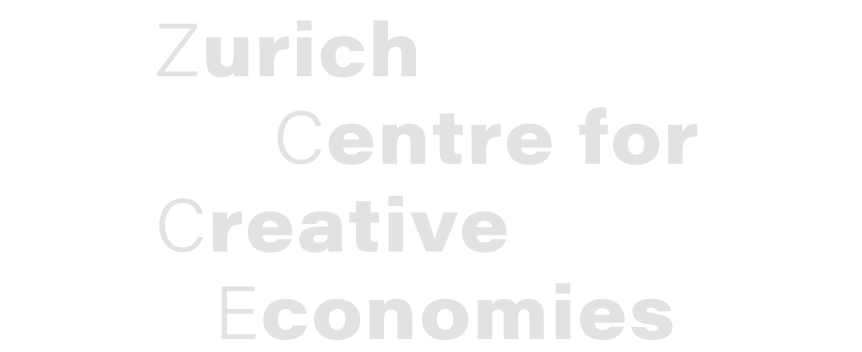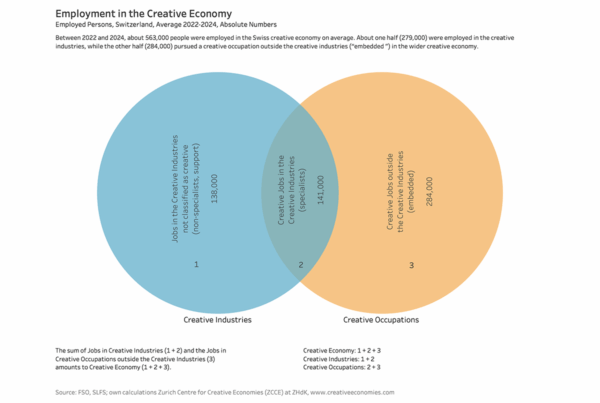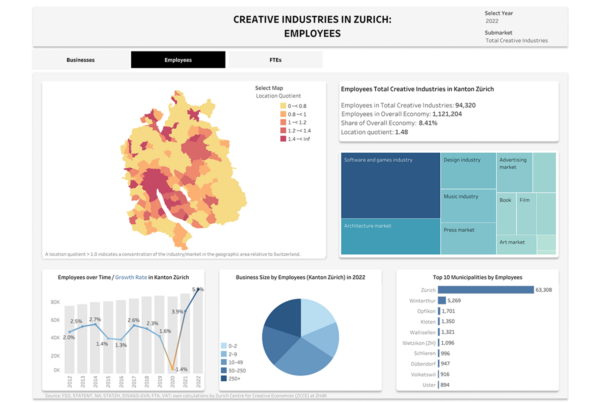The figures show the development of the number of employed persons in the Creative Economy Switzerland for the quarters 2010Q1 to 2021Q4.
In Switzerland, a total of 536,000 persons were employed in the Creative Economy in the 4th quarter 2021, which is 5.7% (-32,000) less than in the 4th quarter 2020 (568,000; persons on short-time work are considered as employed). In contrast, the number of employed persons in the overall economy increased by 0.3% (+15,000) compared to the same quarter of the previous year.
Remark: In 2021, the Swiss Labour Force Survey (SLFS) used here has made a method change in the survey, from a telephone survey to an online questionnaire. For this reason, there is a method break: for part of the results greater caution should be exercised when comparing over time with the years prior to 2021.
Methodology:
This statistical analysis approaches the Swiss creative economy from the perspective of economic activities and occupations.
The Dynamic Mapping methodology, originally applied by Nesta to classify the creative economy, consists of three stages. First, a set of occupations is identified as creative. Second, the workforce intensity of these occupations is calculated for each industry. Third, based on the distribution of creative intensity across industries, a threshold intensity is identified, above which all industries are determined to be creative for measurement purposes, while those below the threshold are not. Finally, creative economy employment is estimated according to the Creative Trident approach.
Based on the classification for creative occupations and industries according to the UK’s DCMS and innovation foundation Nesta, we estimate the size of the Swiss creative economy employment using the Swiss Labour Force Survey (SLFS).
Creative economy employment is given by the sum of creative industries (specialists + non-specialists) employment and all creative jobs in other industries (embedded). The creative economy thus consists of three types of employees:
1. Non–specialists (support): employed persons working in a creative industry, but who are not themselves employed in a creative occupation, for instance, a bookkeeper at a publishing company.
2. Specialists: persons working in creative occupations in creative industries, for instance, a dancer in an ensemble or a journalist writing for a daily newspaper.
3. Embedded: persons working in creative occupations outside the creative industries, for instance, a game designer working in financial services.
Further information in our Creative Economies Reports and in the Research Notes.





